Can't see the wood for the trees?

Private sector frameworks: Establishing best practices

Holistic ESG reporting guidance
Global Reporting Initiative (GRI)
The Global Reporting Initiative (GRI) covers the entire spectrum of ESG reporting with a special focus on human rights. It is among the most widely used ESG standards worldwide. The reporting standard is a framework for creating a sustainability report with standardized ESG disclosures. The GRI structures its guidance into universal standards, sector standards, and topic standards.
-
GRI 1: Foundations – introduces the purpose and system of reporting
-
GRI 2: General Disclosures – contains disclosures on company reporting, governance, employment practices, etc.
-
GRI 3: Material Topics – explains the process of determining materiality and how to report on material topics. Core to the framework is the materiality analysis, which is explained in GRI 3. The resulting material topics must be reported on, using the GRI topic standards where applicable. A common topic standard would be GRI 305: Emissions 2016, where companies have to report their emissions. This standard will be updated in 2024 to include detailed guidance on the reporting of purchased carbon credits.
Get in touch with us to discuss what this means for your company.

Foundational framework for carbon accounting & reporting
Greenhouse Gas Protocol (GHG)

Reduction targets aligned with climate science
Science Based Targets initiative (SBTi)

Making credible claims with carbon credits
Voluntary Carbon Market Integrity Initiative (VCMI)

Enhancing trust & credibility in VCM through governance
Integrity Council for the Voluntary Carbon Market (ICVCM)
The Integrity Council for the Voluntary Carbon Market (ICVCM) is a quality standard for the VCM. It has developed the Core Carbon Principles (CCPs), against which carbon crediting programs and their project methodologies are evaluated. All major carbon crediting programs like VERRA and Gold Standard have applied for the CCP label, with the first units expected to be issued in 2024. The ICVCM is an attempt to establish a leading quality standard that all participants in the VCM can trust.
Stay up to date with these developments:
Summary
Key Takeaways

Standardize Reporting
Use GHG Protocol and GRI for transparent emissions reporting.

Set Ambitious Targets
Align with SBTi for leadership in emission reduction goals

Ensure Credible Investments
Engage with VCMI and ICVCM to mitigate risks in carbon markets.

Government regulations: Foundations for transparency and accountability
CSRD: EU based ESG requirements
The EU Corporate Sustainability Reporting Directive (CSRD) is a regulation that mandates over 50.000 companies operating within the European Union to provide detailed reports on their sustainability practices. This directive significantly expands the scope of the previous Non-Financial Reporting Directive (NFRD) and aims to enhance the transparency and comparability of sustainability information. It requires companies to disclose information on their environmental impact, social responsibilities, and governance practices. The CSRD is designed to help investors, consumers, policymakers, and other stakeholders make informed decisions based on reliable and standardized sustainability data.
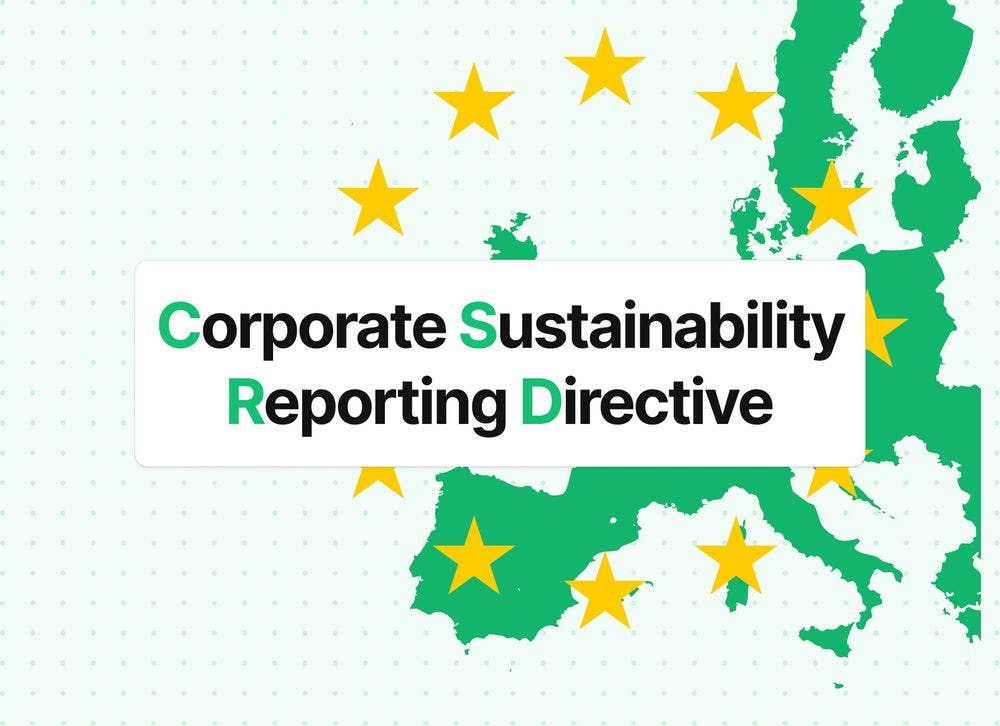
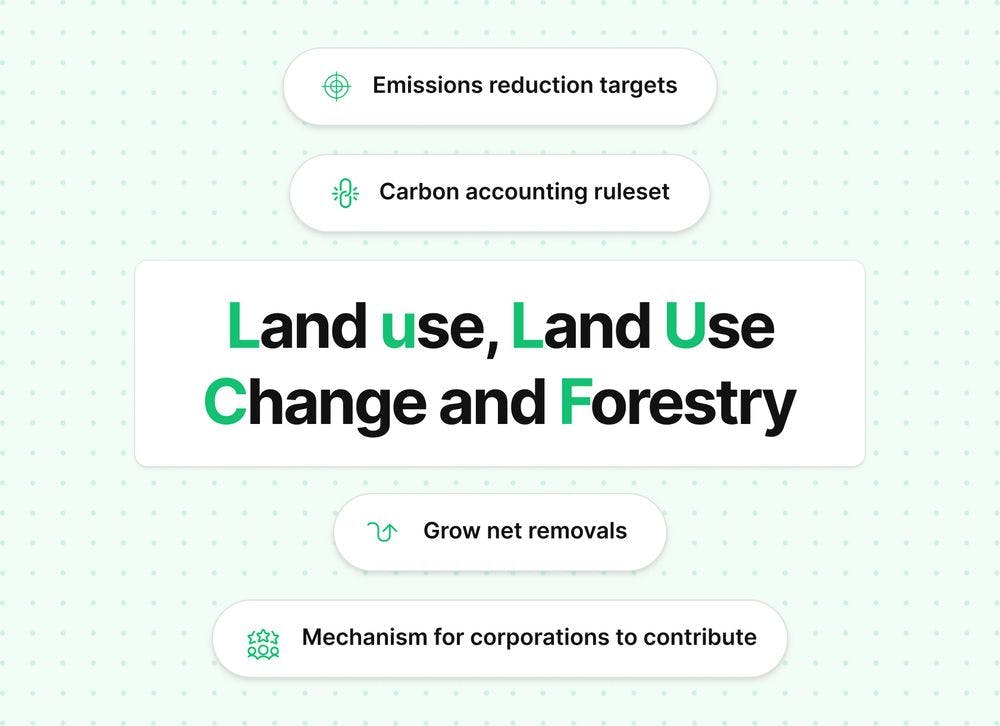
Land Use, Land Use Change and Forestry (LULUCF) regulation
This regulation has been in force since 2018, originally intended to be a carbon accounting ruleset for the activities contained in the LULUCF sector. It was updated to be in line with the emissions reduction targets of the EU. Specifically, the target is to grow net removals from the LULUCF sector from 230 Mt CO₂ to at least 310 Mt by 2030. This increase needs to be financed, and the private sector is sure to play a role. CRCF could become a mechanism for corporations to contribute to this target.
Nature Restoration Law: Promoting Biodiversity and Ecosystem Health
The EU has adopted the law on nature restoration, aiming to restore 20% of degraded land and sea areas in the EU by 2030, and the rest by 2050. The law is aimed at preserving and restoring natural carbon sinks like peatlands and forests to promote biodiversity and store carbon. It is currently unclear how this legislation will affect the additionality of forest or peatland projects under CRCF since those projects have to go beyond the legal requirements to be considered additional.
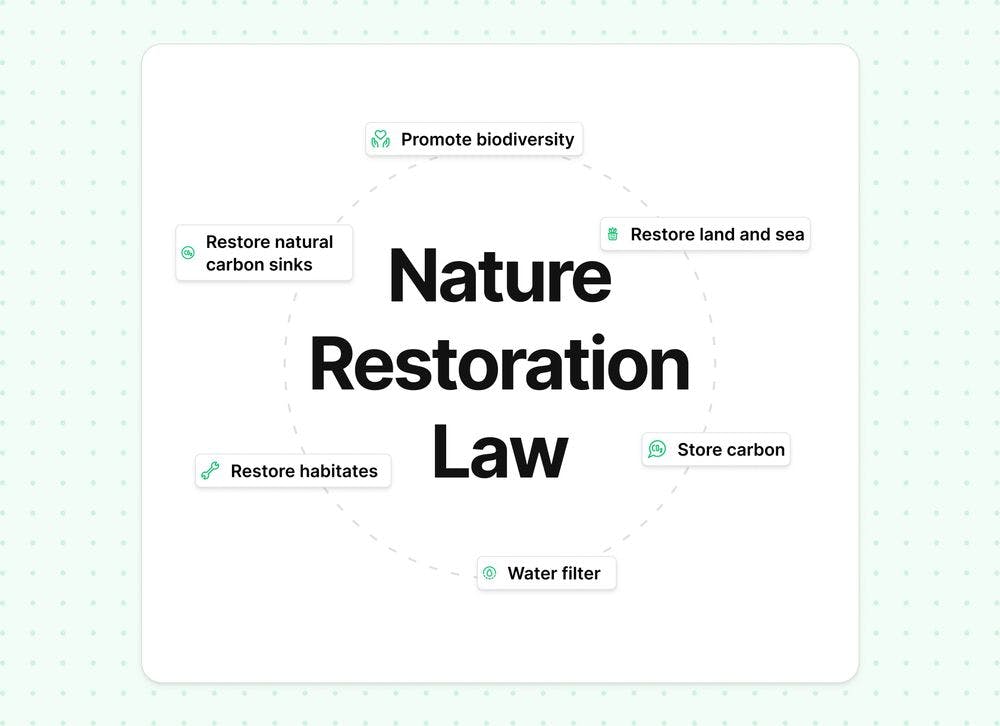
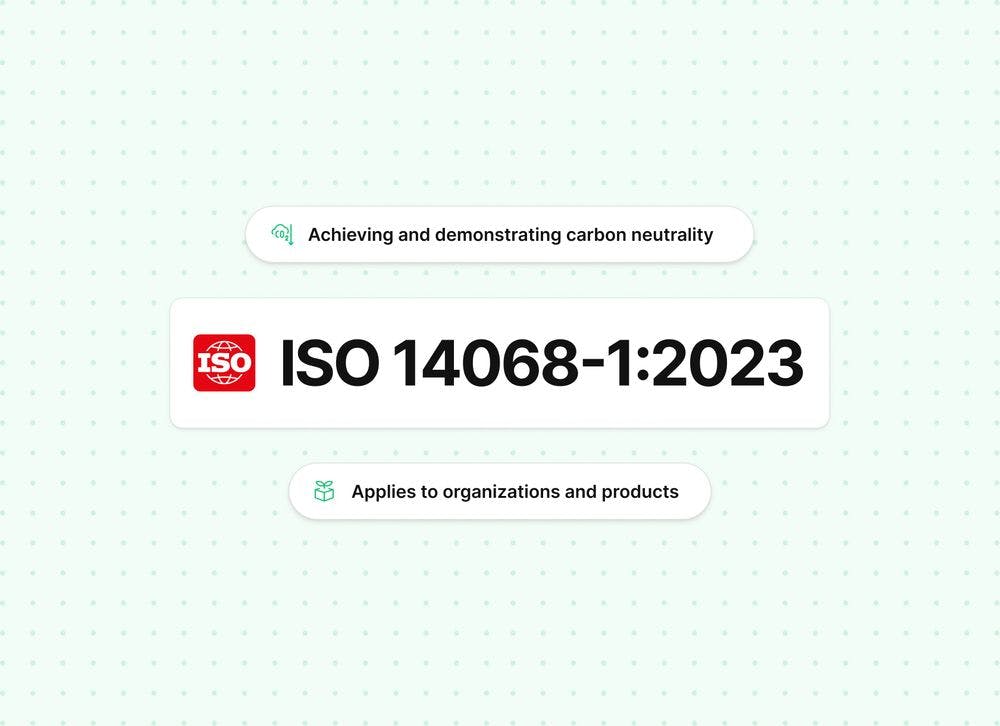
ISO 14068-1:2023 Carbon neutrality
ISO 14068 provides a standardized approach to achieving and demonstrating carbon neutrality. Important for carbon buyers: quality criteria, rules for the purchase, and use of carbon credits are also regulated in the norm. Released in November 2023, it will replace the widely used PAS 2060 standard which will be retired at the end of 2025. The document specifies principles, requirements, and guidance for achieving and demonstrating carbon neutrality through the quantification, reduction, and offsetting of the carbon footprint
EU regulations for the voluntary carbon market
Carbon Removal Certification Framework (CRCF)
The primary objective of the CRCF is to promote the adoption of high-quality carbon removal methods, aiding the EU in meeting its climate obligations, including commitments under the Paris Agreement and the Climate Law. The framework is designed to build confidence in carbon removal efforts by establishing stringent standards for monitoring and liability, while also ensuring that essential 'quality' criteria—accurate measurement, additionality, permanence, and sustainability of certified activities—are satisfied. In other words, the CRCF will regulate European carbon project methodologies to ensure a high-quality supply in the Union.
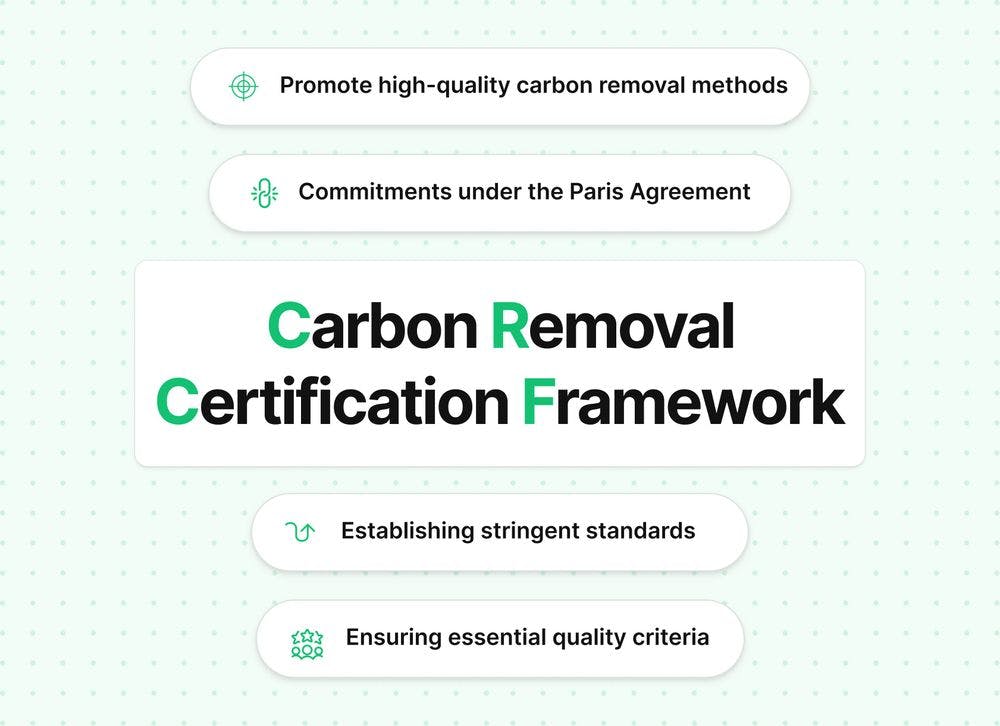
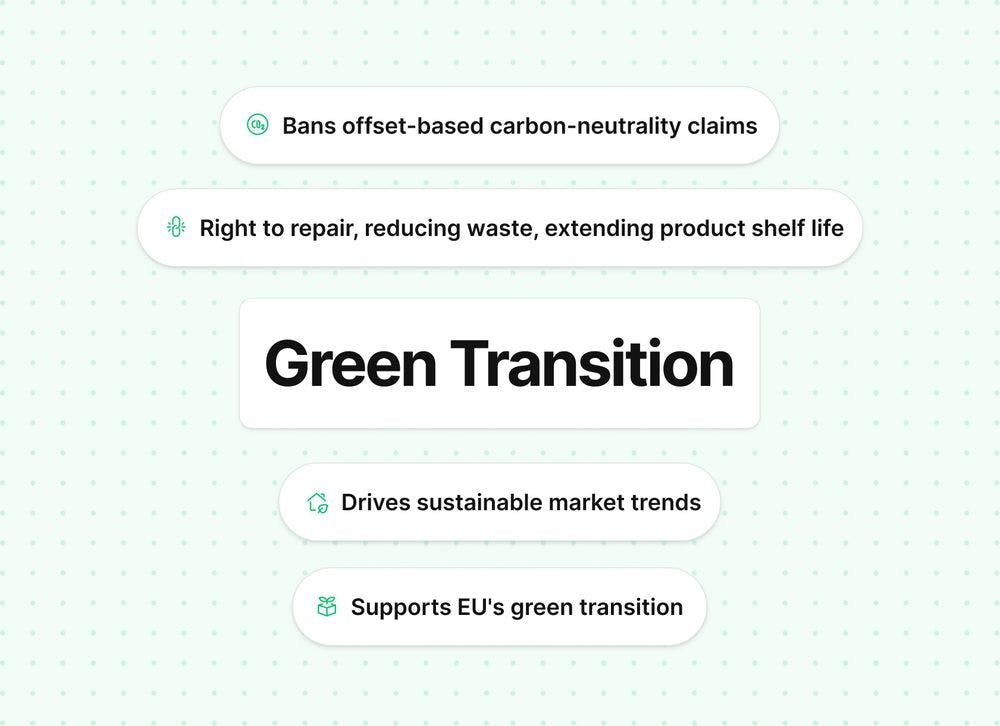
Directive on empowering consumers for the green transition
The directive on empowering consumers for the green transition describes the claims that companies are not allowed to make. For example, it introduced the ban on carbon-neutrality claims based solely on offsets. Additionally, it introduced the right to repair, extending product shelf life and reducing waste. Overall, this directive seeks to drive market trends towards more sustainable options through informed consumer choice, thereby supporting the EU's green transition.
Green claims directive
The green claims directive is currently being developed, with the parliament having adopted its position in March of 2024. The Council of the EU will develop its position in the coming year. As it stands, this directive regulates what claims companies can make. Removal credits from CRCF accredited programs can be used to offset residual emissions.
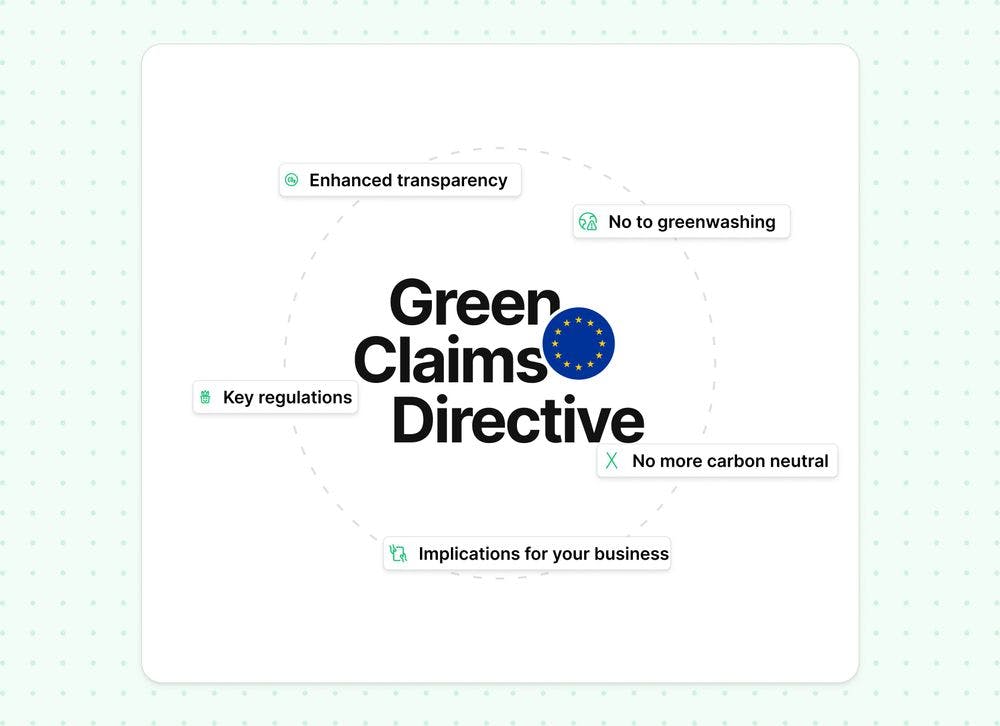
Summary
Key takeaways

Anticipate regulations
Stay informed to be ahead of regulations, ensuring compliance with legal requirements, especially regarding rules around ESG reporting, sustainability claims and the purchase and use of carbon credits.

Communicate with confidence
Avoid greenwashing and prioritize real impact by following the directive on empowering consumers for the green transition and the green claims directive.

Have project quality assurance
Understand frameworks like ISO 14068 and CRCF to make informed climate protection investment decisions.
Book a meeting now to explore more


